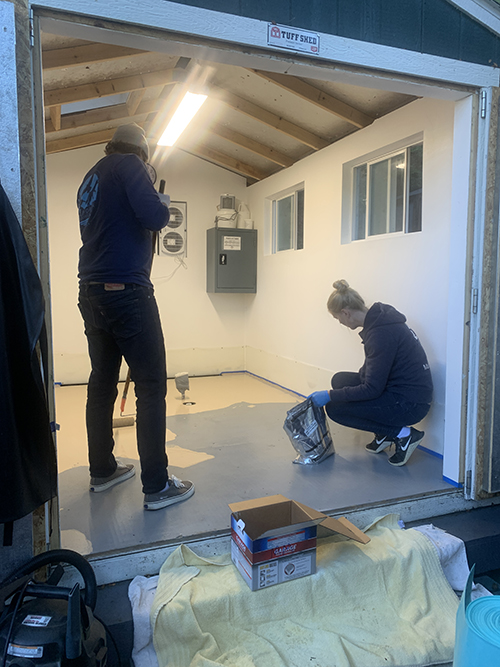By: Heather Henderson, Marine Mammal Program Manager
Marine mammal strandings have a somewhat predictable pattern – spring and summer are extremely busy! A sharp bell curve of activity to be precise. Winter and fall months are generally slower seasons, as we respond to the rhythms of nature and the birthing calendar of our native species. There are fewer rescue calls received during the fall months in SoCal, and we close for rehabilitation during the winter. We are often asked, “what do you do when there are no patients on-site?” The reply – reflect, improve, and prepare for the next busy stranding season.
Once the enclosures are empty, annual maintenance becomes top priority. The marine mammal staff and volunteers stay busy rebuilding, repairing, deep cleaning, training, and doing quality control on data entry. The most intense aspect of repairing revolves around performing safety checks in every nook of the enclosures, carriers, and rescue gear so that we may be prepared for the busy months.

Exam Room Painting

Kevin Fixes the Wall

Rick Prepping Floor

Joanna Paints
2023 did not follow the usual normal pattern of ramping down during June and July. On the contrary, due to the Domoic Acid Crisis experienced by California sea lions during the summer months, patients were kept in-house through mid-September. It was wonderful to have the opportunity to assist dozens of additional patients, but it abbreviated the time available to complete off season projects and repairs.
Projects include laying new flooring, freshening up and protecting the areas with a coat of paint, and replacing all the valves throughout the marine mammal enclosures and pool filtration system. In addition to performing necessary repairs, project season is a time for our crews to meet new volunteers and forge new friendships.
The volunteer family at California Wildlife Center is comprised of an amazing and diversely talented group of people. It is easy to see why they choose to be involved when beautiful seals and sea lions are around, but the true expression of their commitment shines during the fall, when this devoted team is focused on improving our facility in order to be ready to offer the best care possible to stranded marine mammals in Malibu.




